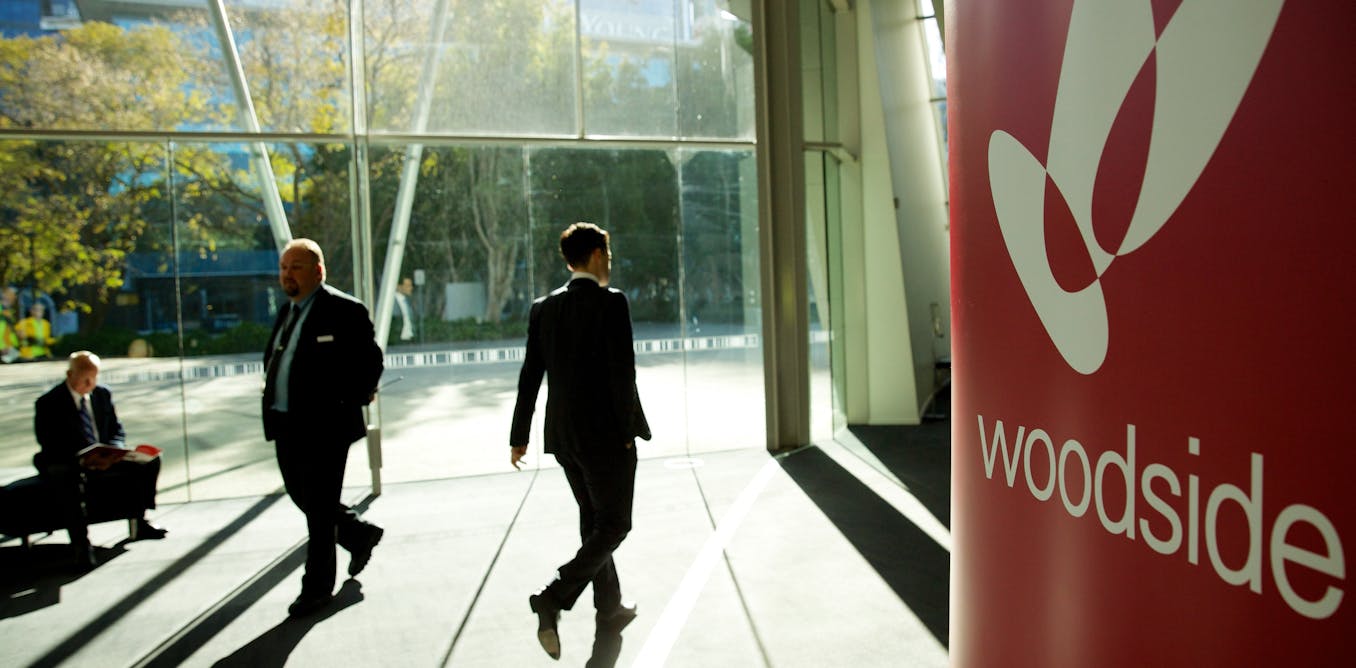
Woodside’s Browse project setback shows the gas industry needs to get its act together
- Select a language for the TTS:
- UK English Female
- UK English Male
- US English Female
- US English Male
- Australian Female
- Australian Male
- Language selected: (auto detect) - EN
Play all audios:
Tom Houghton ne travaille pas, ne conseille pas, ne possède pas de parts, ne reçoit pas de fonds d'une organisation qui pourrait tirer profit de cet article, et n'a déclaré aucune autre
affiliation que son organisme de recherche.
Energy giant Woodside’s decision to shelve its Browse natural gas project off Australia’s northwest coast is no doubt a disappointment for many people in Western Australia, but is by no
means a disaster for the state’s economy.
Nor is it an indication that the future of the Northwest Shelf’s gas reserves is in jeopardy. Long-term world demand for natural gas is robust, given its anticipated role in the low-carbon
transition where it is expected to displace coal in power generation.
Data from the Global Energy Assessment predicts that natural gas demand will increase globally in all scenarios until at least 2050 (see below).
However, the shelving of the project should not be a complete surprise. It highlights two important issues that merit concerted action by the industry: one related to price and the other to
cost.
At present, most of the liquefied natural gas (LNG) produced in WA is destined for Japan and other parts of Northeast Asia, where the dominant pricing mechanism is based on oil prices. The
Japan Crude Cocktail, a composite of import prices, provides a benchmark price around which the LNG price is allowed to fluctuate between set boundaries and according to a set formula.
Long-term contracts with built-in protection for buyer and seller against oil price volatility have increased the bankability of projects like Browse. This is because access to cheap project
financing is available only to projects with less volatile cash flows and more long-term certainty.
Gas and oil prices are indexed together for two main reasons. First, oil and gas can substitute for one another in certain industrial processes so can sometimes be purchased interchangeably;
and second, the greater liquidity and transparency in the oil market mean that price-setting is more reliable and more reflective of supply and demand conditions.
However, work by the Oxford Institute for Energy Studies shows that LNG prices set in this way are not reflective of supply and demand conditions for natural gas and suggests that gas prices
might be better formed at regional LNG hubs, rather than with reference to oil markets.
There is evidence that Japanese gas buyers have begun to move away from long-term oil-based contracts and towards spot market purchases. In 2014, spot trades represented nearly 25% of all
LNG imports to Japan, compared with less than 10% five years earlier.
This brings us to the question of cost, and in particular the relatively high cost of doing business in Western Australia. According to a recent Bankwest Curtin Economics Centre report, wage
growth in WA outstripped the national average during the mining boom. During this period, real annual labour costs per worker in WA mining (including oil and gas) rose by 11.1% to
A$161,000, up from A$145,400 in 2007-08.
Added to labour costs are the complexities of developing projects in remote regions, where factors like high transport and energy costs contribute to a lack of competitiveness with other
projects around the world. Average diesel prices in the Kimberley, for example, are some 17 cents a litre higher than in Perth.
Scarce infrastructure and competition for highly specialised workers not only lead to higher costs but also higher project risk, increasing the likelihood of cost overruns. Couple this with
Woodside’s earlier decision to use the untested technology of offshore floating LNG platforms (FLNG) at Browse, and it is easy to see why the company took the view that the risk-adjusted
returns no longer justify the A$40 billion investment at this stage.
There is clearly an opportunity for the industry’s players to work together to bring down costs. But a recent report by consulting firm Deloitte showed that this is not really happening so
far. In the UK, the newly formed Oil & Gas Authority is taking a tough line with the industry, insisting that companies work more closely together to address common issues – and threatening
stiff penalties if they don’t.
One way of driving innovation might be through a tightening of the retention lease arrangements in WA. Retention leases provide security of title for petroleum resources that are not
currently commercially viable but which have genuine development potential. The Domgas alliance, for instance, has been vocal in suggesting that “develop it or lose it” provisions should be
strengthened, allowing companies better equipped to operate in this new environment to thrive.
Perhaps when the leases for Browse were last renewed in 2015 an insistence that Woodside proceed with the development or lose them might have focused the project leaders’ minds on how to do
that in a way that mitigated both cost and risk.